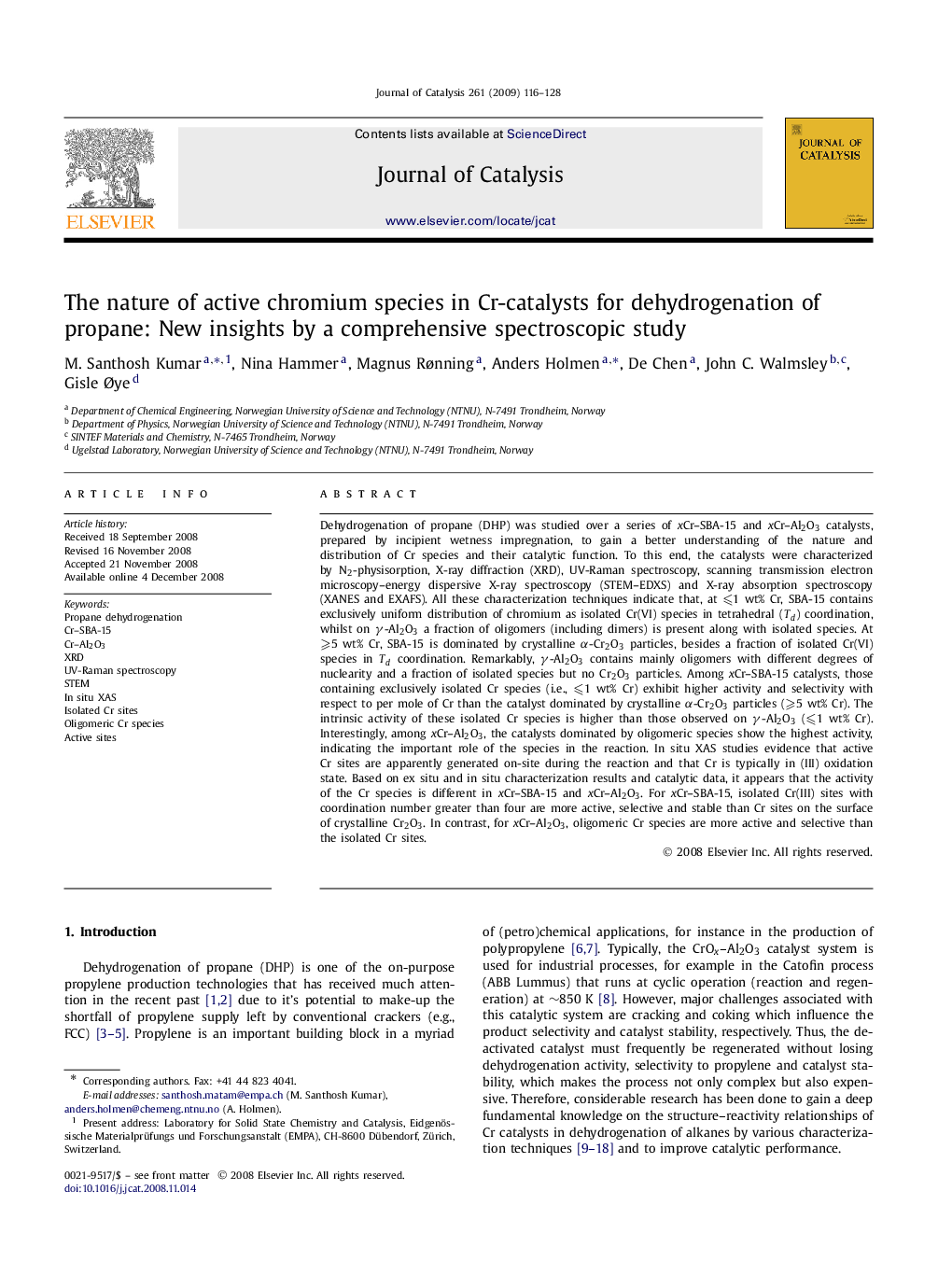| کد مقاله | کد نشریه | سال انتشار | مقاله انگلیسی | نسخه تمام متن |
|---|---|---|---|---|
| 62685 | 47650 | 2009 | 13 صفحه PDF | دانلود رایگان |

Dehydrogenation of propane (DHP) was studied over a series of xCr–SBA-15 and xCr–Al2O3 catalysts, prepared by incipient wetness impregnation, to gain a better understanding of the nature and distribution of Cr species and their catalytic function. To this end, the catalysts were characterized by N2-physisorption, X-ray diffraction (XRD), UV-Raman spectroscopy, scanning transmission electron microscopy–energy dispersive X-ray spectroscopy (STEM–EDXS) and X-ray absorption spectroscopy (XANES and EXAFS). All these characterization techniques indicate that, at ⩽1 wt% Cr, SBA-15 contains exclusively uniform distribution of chromium as isolated Cr(VI) species in tetrahedral (TdTd) coordination, whilst on γ-Al2O3 a fraction of oligomers (including dimers) is present along with isolated species. At ⩾5 wt% Cr, SBA-15 is dominated by crystalline α-Cr2O3 particles, besides a fraction of isolated Cr(VI) species in TdTd coordination. Remarkably, γ-Al2O3 contains mainly oligomers with different degrees of nuclearity and a fraction of isolated species but no Cr2O3 particles. Among xCr–SBA-15 catalysts, those containing exclusively isolated Cr species (i.e., ⩽1 wt% Cr) exhibit higher activity and selectivity with respect to per mole of Cr than the catalyst dominated by crystalline α-Cr2O3 particles (⩾5 wt% Cr). The intrinsic activity of these isolated Cr species is higher than those observed on γ-Al2O3 (⩽1 wt% Cr). Interestingly, among xCr–Al2O3, the catalysts dominated by oligomeric species show the highest activity, indicating the important role of the species in the reaction. In situ XAS studies evidence that active Cr sites are apparently generated on-site during the reaction and that Cr is typically in (III) oxidation state. Based on ex situ and in situ characterization results and catalytic data, it appears that the activity of the Cr species is different in xCr–SBA-15 and xCr–Al2O3. For xCr–SBA-15, isolated Cr(III) sites with coordination number greater than four are more active, selective and stable than Cr sites on the surface of crystalline Cr2O3. In contrast, for xCr–Al2O3, oligomeric Cr species are more active and selective than the isolated Cr sites.
Active Cr sites for dehydrogenation of propane form in situ during reaction and that Cr is typically in (III) oxidation state.Figure optionsDownload high-quality image (46 K)Download as PowerPoint slide
Journal: Journal of Catalysis - Volume 261, Issue 1, 1 January 2009, Pages 116–128